|
East Oregon Lumber Company |
|
|
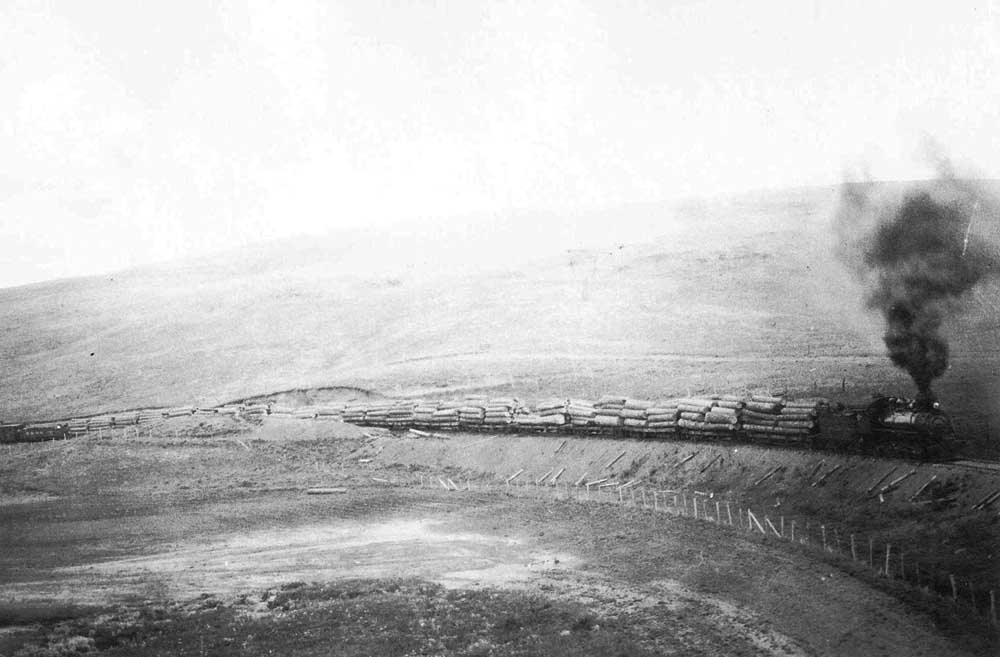 |
|
East Oregon Lumber #3 with a log train on Trout Creek. J.B. Bane collection.
|
|
|
|
History A group of experienced timber capitalists from Kansas City, Missouri, led by Duval Jackson started buying timberlands in western Wallowa County about 1908 or 1909. Around 1911 or 1912 Duval traded those acquired lands to the George Palmer Lumber Company in exchange for lands Palmer owned north of Enterprise. By this point Duval and his associates had incorporated the East Oregon Lumber Company, which continued purchasing stands of timber centered in two blocks north of Enterprise. The company bought the timber purely on a speculative basis, but then in late 1913/early 1914 the U.S. Forest Service offered a timber sale consisting of 120 million board feet of mostly Ponderosa pine that lay directly between the two East Oregon owned blocks. The company submitted the only bid for the sale, which gave them ownership or control of 370 million board feet in a relatively compact contiguous area. The East Oregon Lumber Company almost immediately decided to shift its focus and mill the lumber themselves, and to that end by July 1914 the company was submitted the required paperwork to operate industrial facilities in Oregon. The Enterprise Commercial Club deeded an 84-acre sawmill site in Enterprise to East Oregon, and by late summer the company started building a logging railroad running from the mill north towards the timber, which started seventeen miles north of town. Duval stated the railroad would eventually extend 36 miles north and would be operated as a common carrier, though no records of the line becoming one seem to have survived. Construction on the project accelerated through 1915. The company contracted lumber for use in the construction from several sources, including a small sawmill operated by a John Patterson who relocated it to the head of Davis Creek, about fourteen miles north of Enterprise. The logging railroad had enough line built by March 1915 to host a special excursion on the 14th of that month that ran out to the end of track. By late summer or early fall the railhead reached the Patterson mill, where the company built a wye and established Camp 1, its first logging camp. East Oregon initially powered its railroad with a used 2-6-0 acquired from the Southern Pacific, and a McGiffert log loader purchased new near the end of 1915 and a slide back loader handled log loading chores. The railroad hauled the first logs down to the mill that fall, and the mill cut its first logs on 22 November. East Oregon initially focused its logging operations down the Davis Creek drainage, and between 1916 and 1918 the company built about ten miles of railroad and at least four log camps along the creek. The locomotive roster expanded with the railroad, as in early 1916 the company acquired a new 63-ton two-truck Heisler. The following year the company ordered a new 70-ton Mikado type locomotive new from Baldwin to handle the main line run between Enterprise and Camp 1. By the end of 1918 the company had nearly exhausted the timber available in the Davis Creek drainage, which prompted them to start pushing a railroad from Camp 1 east into the Swamp Creek drainage. This line required steep grades, two switchbacks, and several large trestles to reach the bottom of Swamp Creek, where the company built its Camp 6. The railroad then extended north several miles down the bottom of the creek, along which the company established at least a couple more logging camps. The railroad on Swamp Creek was very boggy, which led to challenging operating conditions. The company acquired a fourth locomotive, a 70-ton three-truck Shay originally ordered by the U.S. Army for its Spruce Production operations but sold instead to East Oregon. After its arrival the Heisler worked the logging railroad up Swamp Creek, the Shay pulled the heavy log loads up over the divide to Camp 1, and the Baldwin then handled the main line chores. The timber in the Swamp Creek drainage started to run out by 1920, and around 1921 East Oregon started building a new main line that connected with the original main line two miles south of Camp 1 and then ran a bit northwest and then due north for about ten and a half miles to the point where the company built its Camp 10. East Oregon built this railroad to exceptionally high engineering standards in order to accommodate the large Mikado, with grades kept at no more than three percent. The line required two large trestles, the largest of which was about 340 feet long and 47 feet high, and substantial earthwork completed by two gas shovels. Camp 10 would be the largest, most modern, and last log camp East Oregon would build. The company then constructed a network of logging railroad spurs off of this line, mostly running up the various drainage bottoms with little if any grading work. The East Oregon company suffered through its shares of trials, including a massive fire in 1919 that destroyed the original Enterprise mill. The company promptly replaced it with a larger and more modern facility. However, the company could not overcome the economic storms that beset the pine lumber industry starting in 1924. By March 1927 the company reported it would only run one eight hour shift, and even then stated it might have to shutter the mill for stretches of thirty days or more if buisness did not justify keeping the mill open. The economic situation failed to improve, and by May 1928 the company had declared bankruptcy. The mill closed for the last time under Eastern Oregon ownership in July 1928. The company had been in the process of extending its main line north of Camp 10 at the time, and work on that construction abruptly ended with the rest of the operation. The bankruptcy court ordered a sale on the properties on 17 October 1928, at which time the Oregon White Pine Lumber Company, another Kansas City based company, bought the mill, but the railroad ended up with one Enterprise Logging Company. Oregon White Pine tried reopening the mill in 1929, but back taxes and the inability to use the logging railroad hampered those efforts. The company finally got things going and managed to maintain sporadic operations through the 1930s, using trucks to bring logs to the mill. The railroad vanished from maps by 1935, though at least some of the equipment remained in Enterprise until sold mostly for scrap in 1938. A new mill, called the Murrey mill, finally resumed operations on the mill site in 1940. The Mt. Emily Lumber Company bought the mill in 1945 and ran it until November 1953, when it finally closed forever. |
|
|
Maps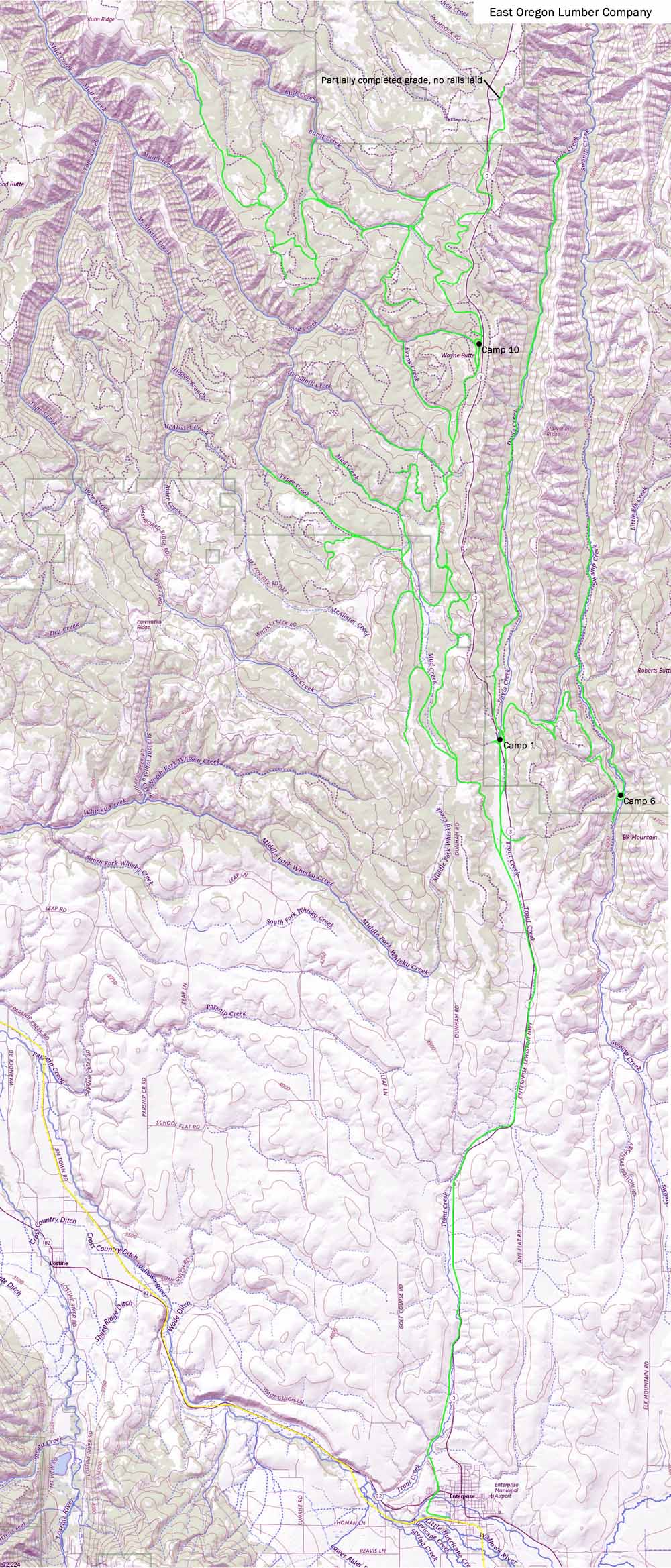 |
|
Map of the East Oregon Lumber Company logging railroad system.
|
|
|
|
Locomotive Roster 1603- Baldwin 2-6-0, c/n 6697, built 5/1883. Cylinders 17x24, Drivers 57". Built as Oregon & California #31; to Southern Pacific #1515, then #1603. To Brady & Son 1914; to East Oregon Lumber Company 7/14/1914; to Superior Log & Spur Company #1, Onalaska, WA. 2- Heisler 2-Truck, 63 tons, c/n 1325, built 2/1916. Acquired new; to Enterprise Logging Company 1928; to Union Steel & Rail Corp by 1938, who unsuccessfully tried selling it. To Whitney Company and scrapped. 3- Baldwin 2-8-2, c/n 45248, built 3/1917. Cylinders 18x24, Drivers 44". Acquired new; to Enterprise Logging Company 1928; to Columbia & Cowlitz Railroad #102; to Weyerhaeuser Timber #102. 4- Lima 3-truck Shay, c/n 3011, built 4/10/1919. Originally ordered by Siems, Carey-H.S. Kerbaugh Corporation, a contractor for U.S. Spruce Production Corporation, but sold 3/31/1919 while under construction to East Oregon Lumber; to Enterprise Logging Company 1928; Scrapped probably in the late 1930s. |
|
|
|
Photos |
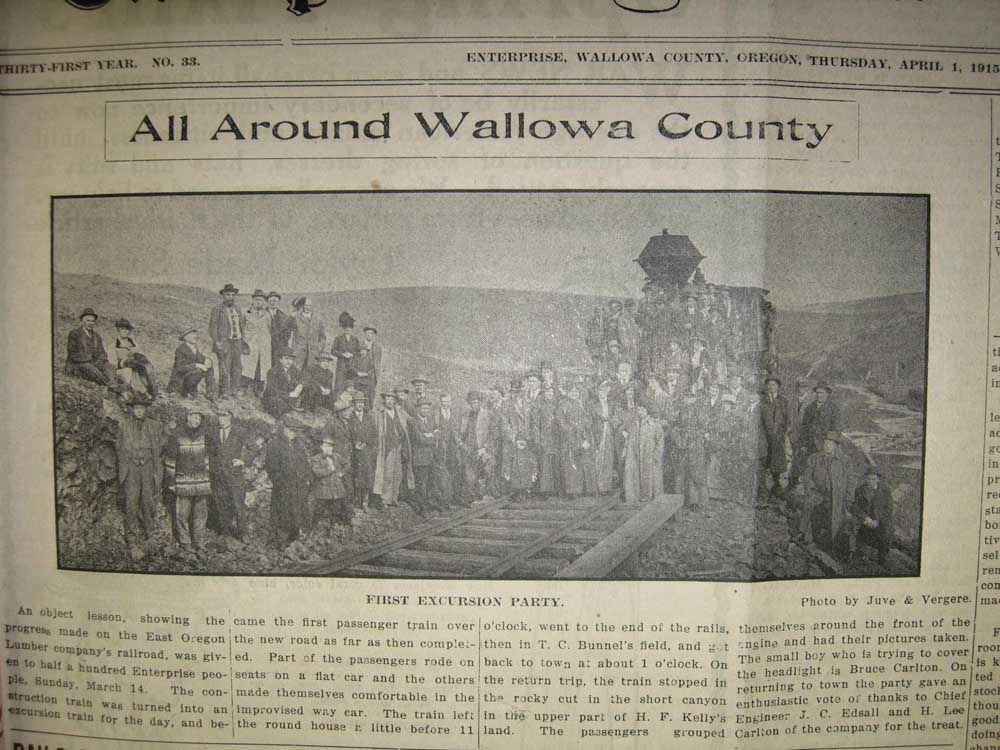 |
|
News article about the excursion the East Oregon Lumber ran in March 1914 on the front page of the Enterprise Record Chieftan. J.B. Bane collection.
|
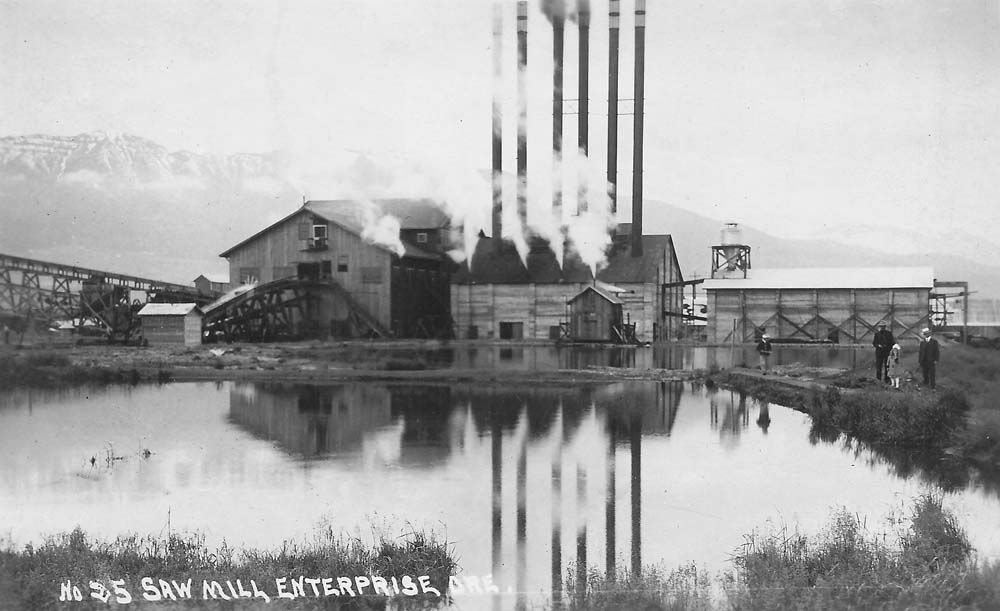 |
|
The East Oregon Lumber Company mill in Enterprise. J.B. Bane collection.
|
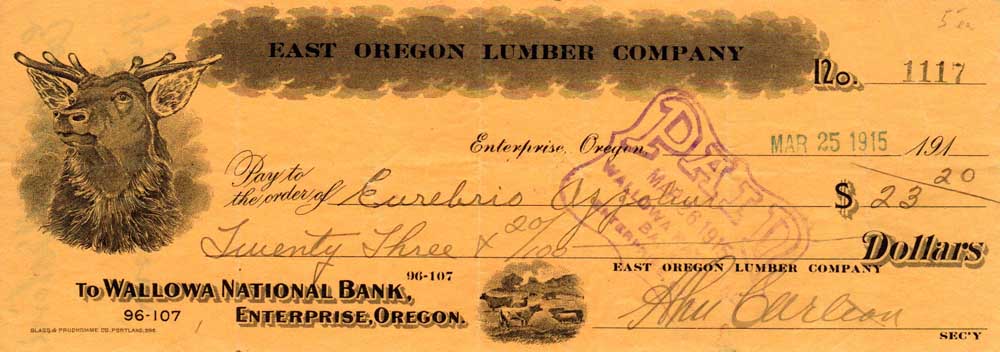 |
|
A vintage check from the East Oregon Lumber Company. J.B. Bane collection.
|
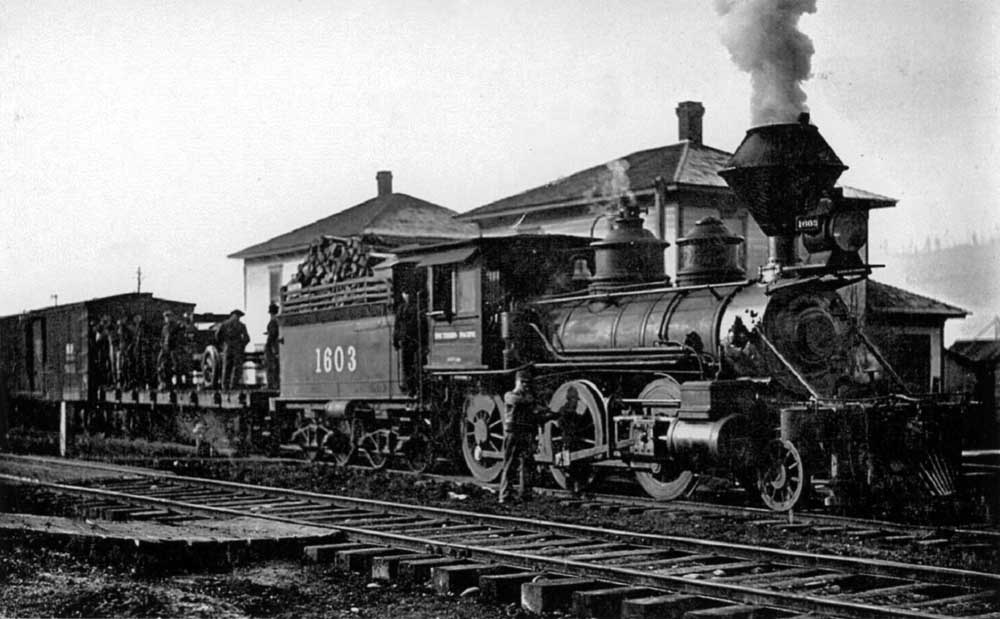 |
|
A postcard view of the Southern Pacific #1603, destined to become East Oregon's first locomotive, a few years before SP sold the locomotive. Jeff Moore collection.
|
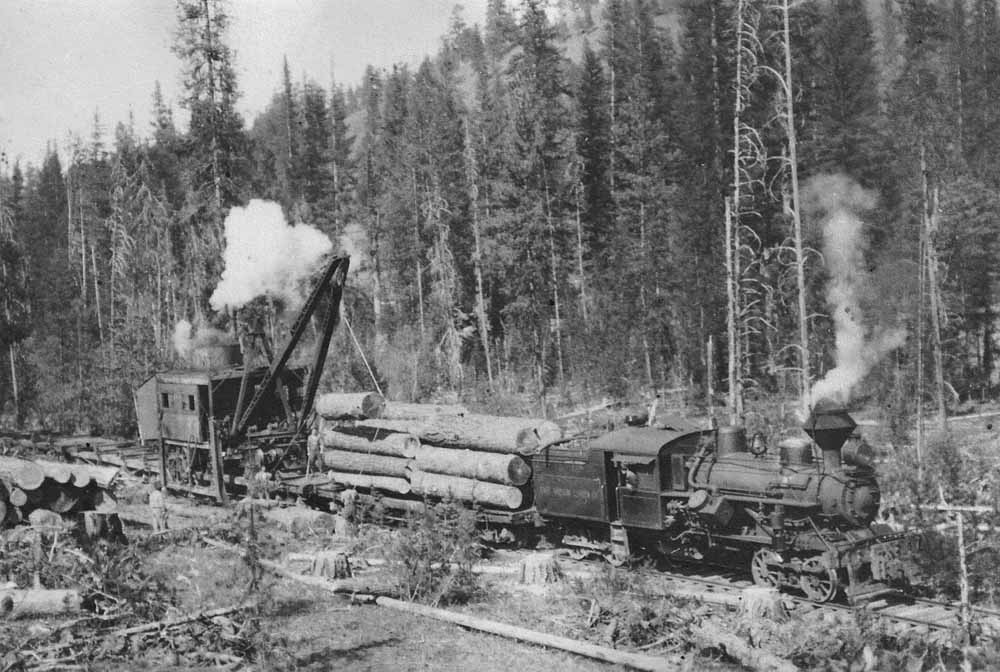 |
|
East Oregon #2 switching the McGiffert loader on Swamp Creek around 1920. J.B. Bane collection.
|
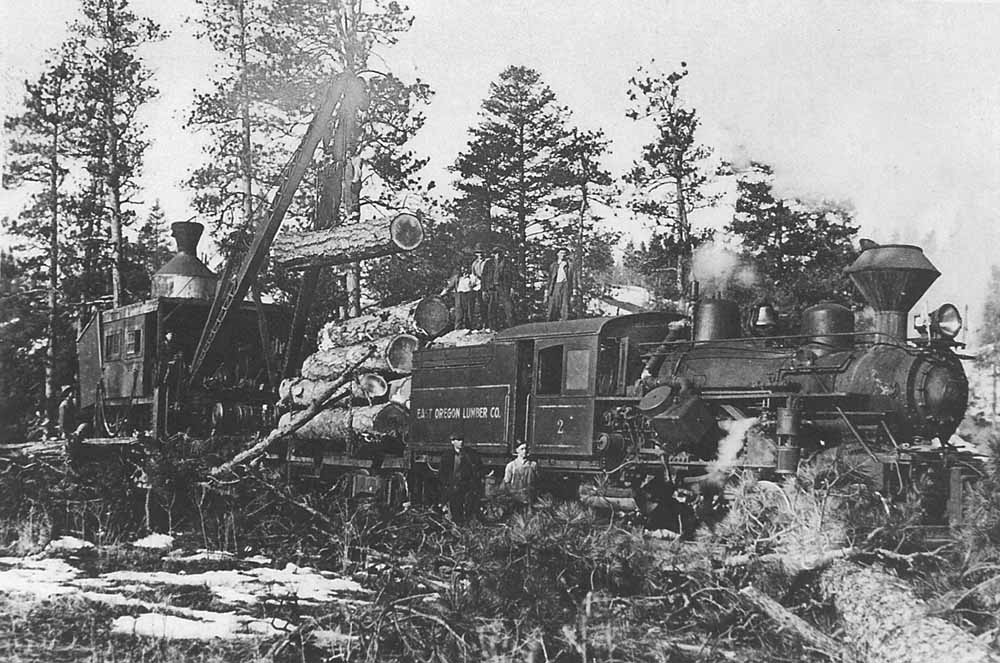 |
|
Another view of the East Oregon 2 switching at the McGiffert loader. J.B. Bane collection.
|
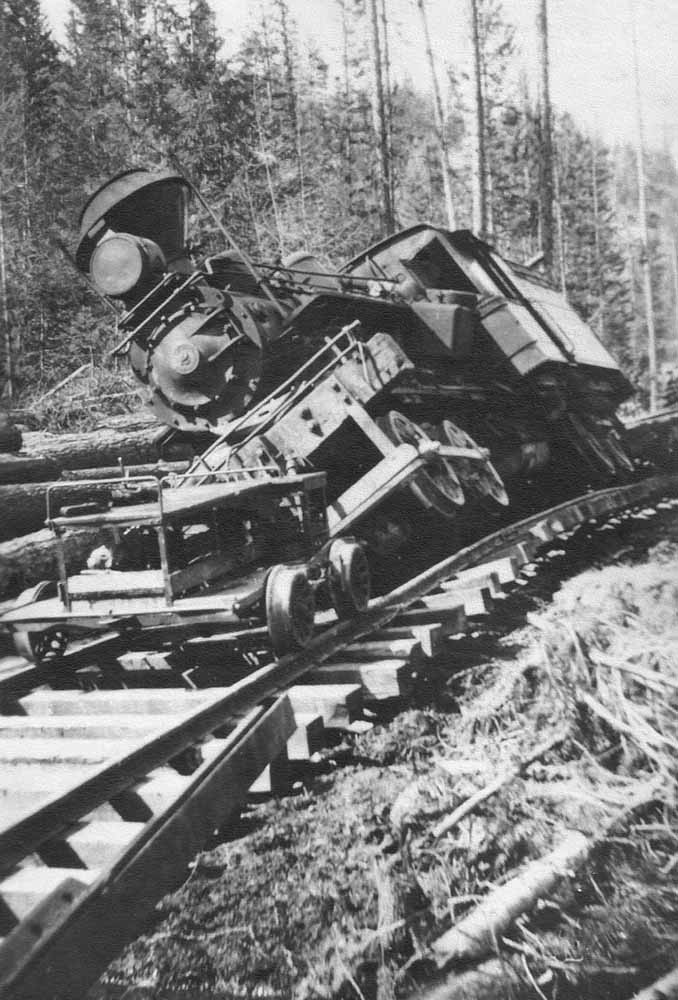 |
|
The inevitable result of a heavier locomotive on unballasted track on the soft roadbed the company built along many of the drainage bottoms. J.B. Bane collection.
|
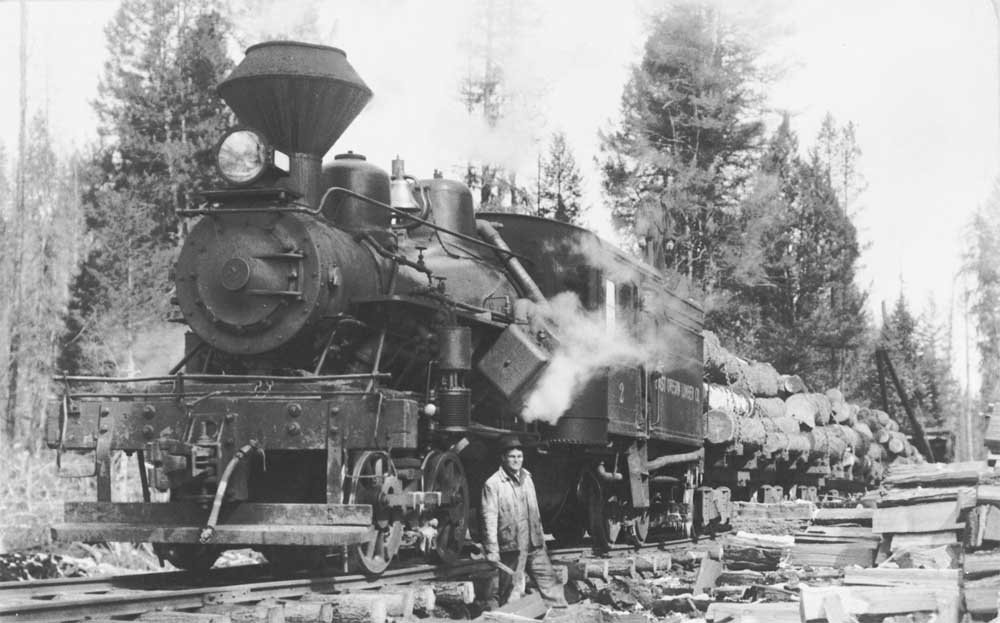 |
|
One last photo of the East Oregon Lumber #2. J.B. Bane collection.
|
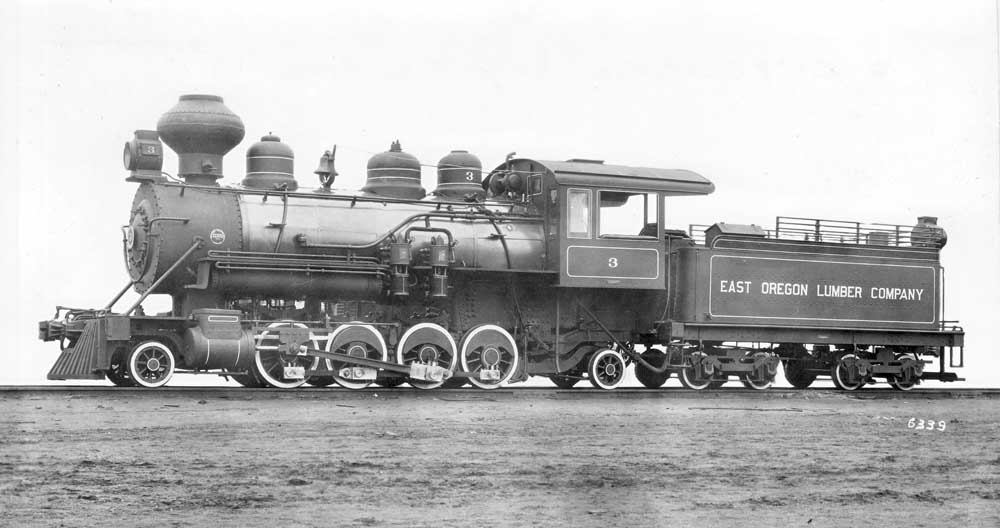 |
|
Builders photo of the East Oregon Lumber #3. J.B. Bane collection.
|
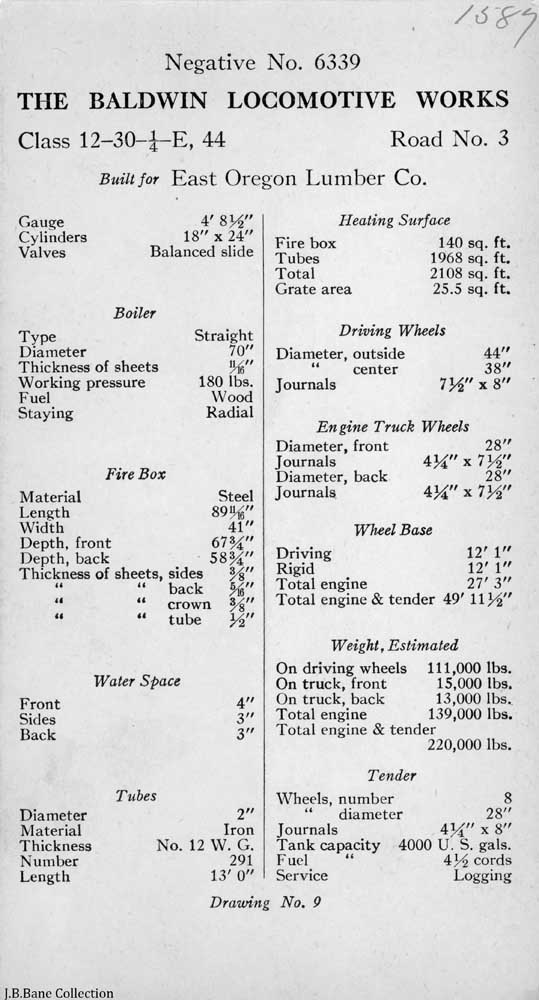 |
|
The specification sheet on the back of a builders card of the East Oregon Lumber #3. J.B. Bane collection.
|
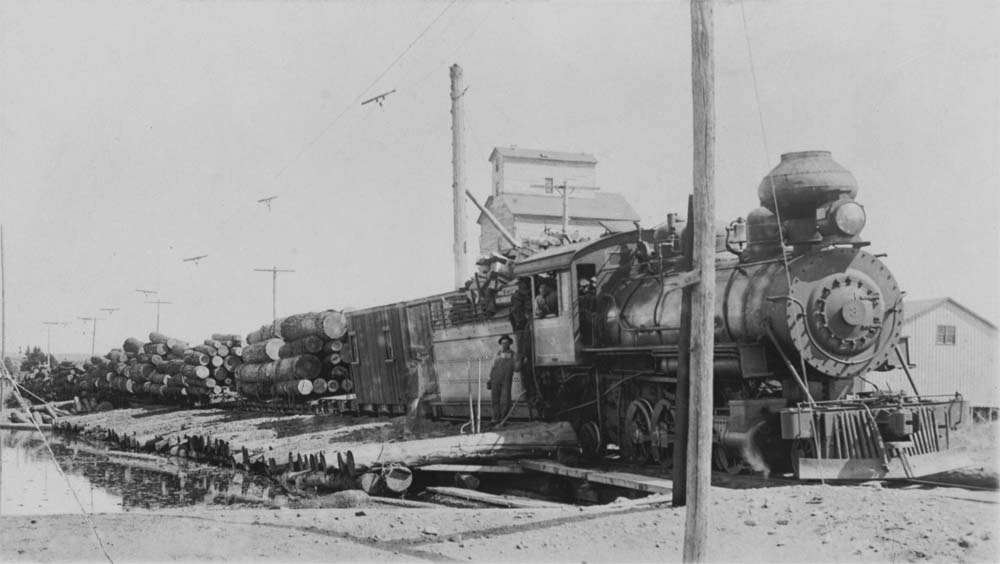 |
|
The East Oregon Lumber #3 at the Enterprise log dump. J.B. Bane collection.
|
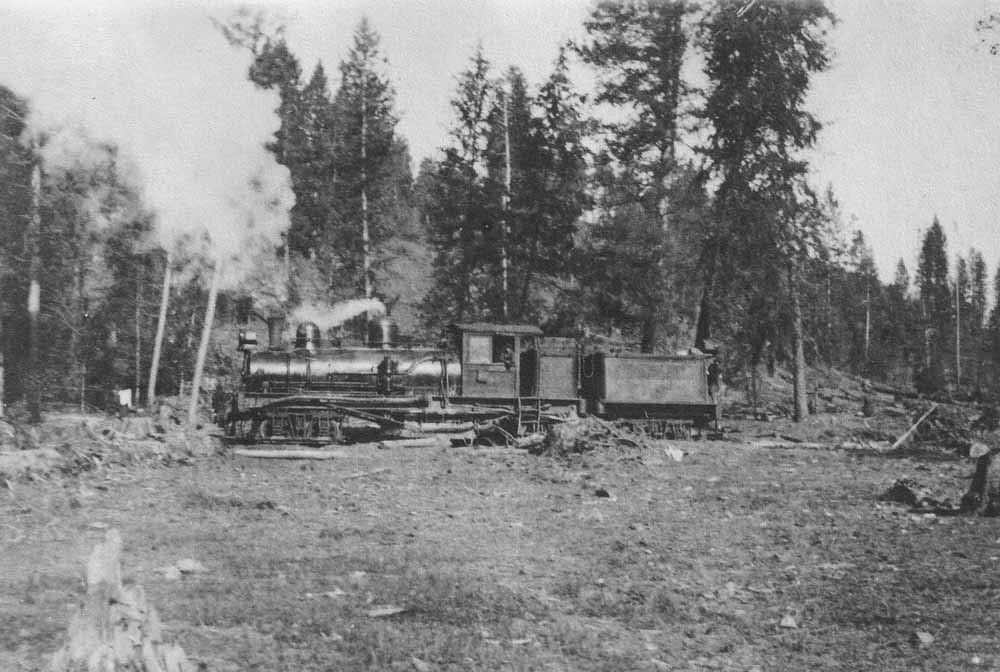 |
|
East Oregon Lumber #4 on the Swamp Creek line. J.B. Bane collection.
|
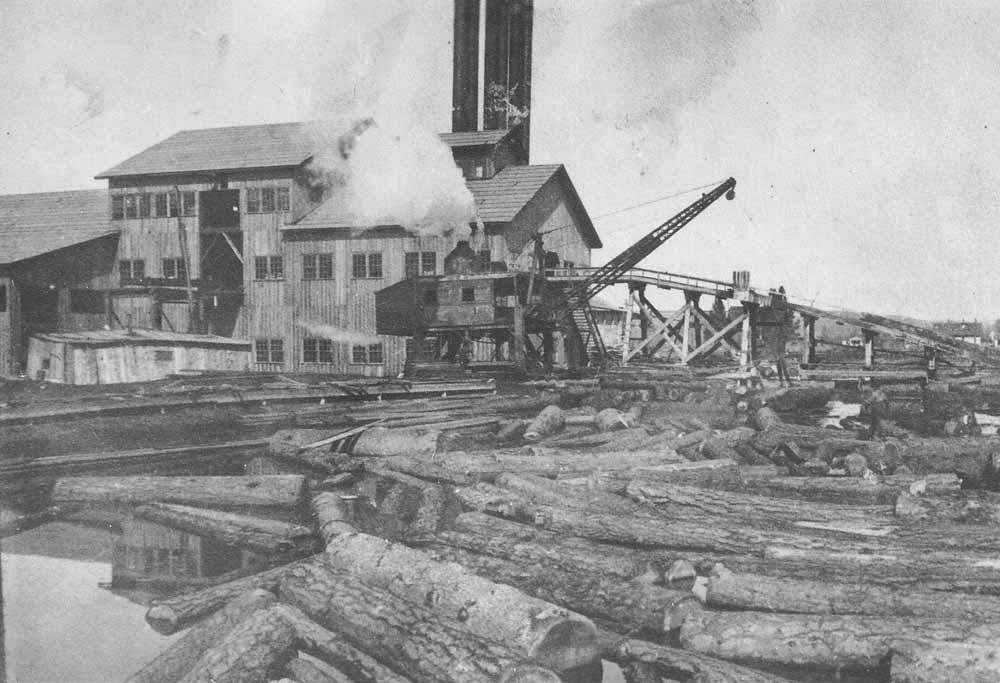 |
|
The McGiffert loader at the log dumpt at the Enterprise mill. J.B. Bane collection.
|
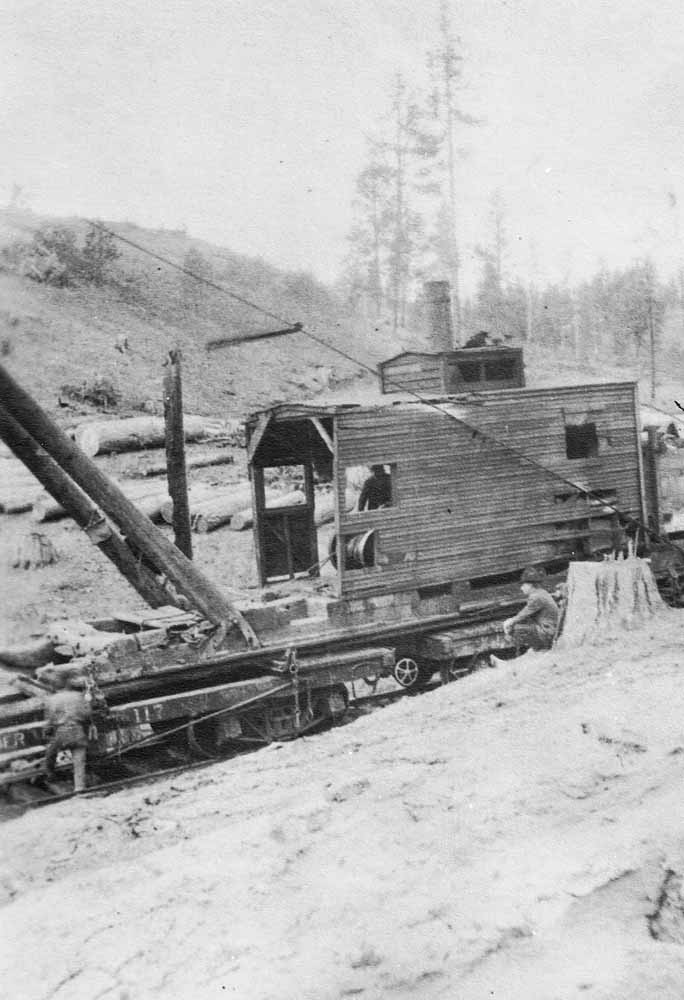 |
|
East Oregon Lumber's slide back loader. J.B. Bane collection.
|
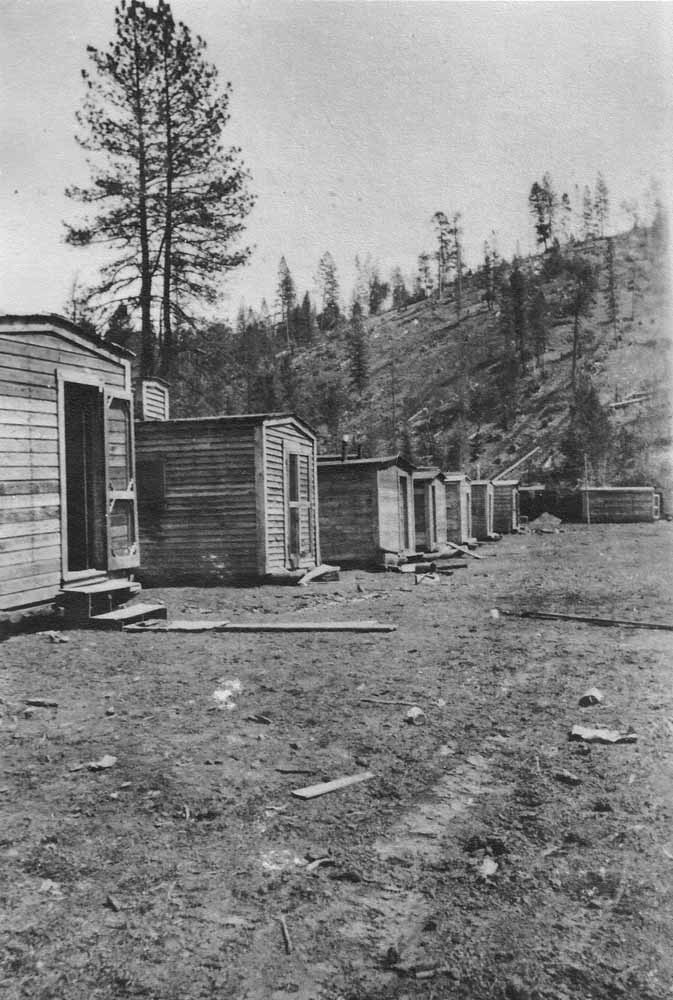 |
|
An East Oregon Lumber log camp on Swamp Creek. J.B. Bane collection.
|
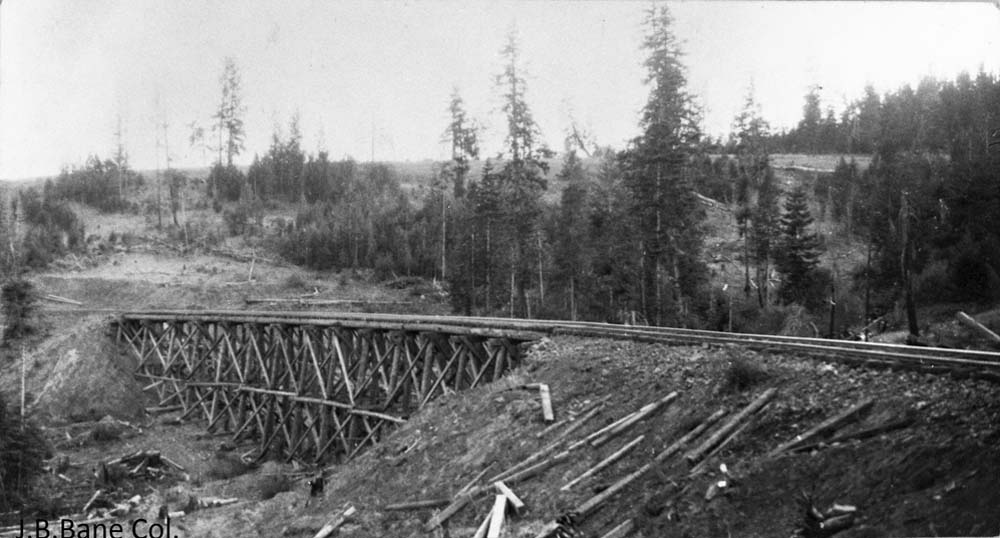 |
|
One of the large trestles East Oregon built on the new line to Camp 10. J.B. Bane collection.
|
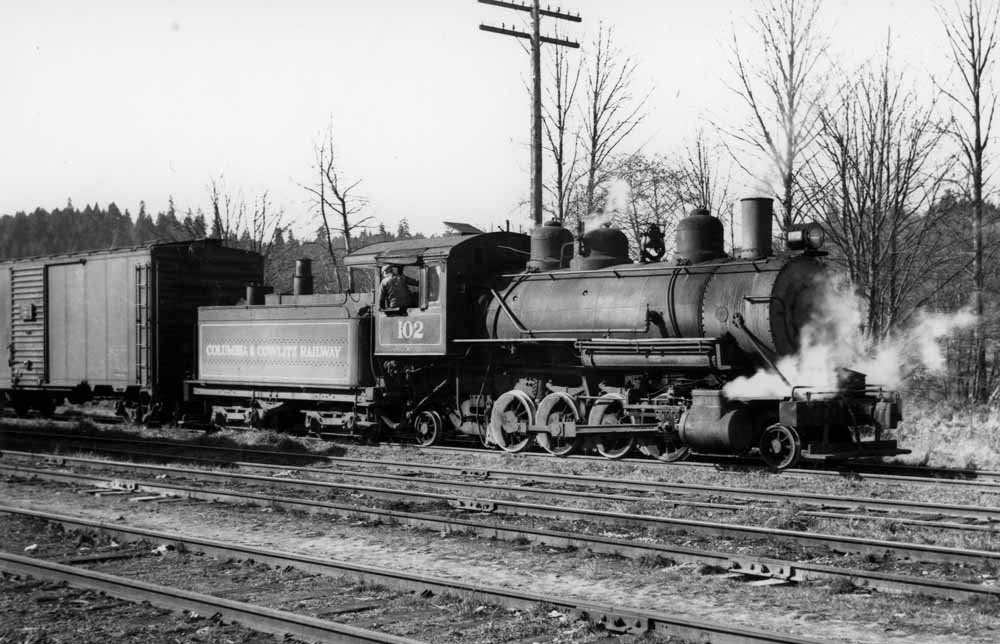 |
|
Columbia & Cowlitz #102, formerly East Oregon #3. Jeff Moore collection.
|
|
|